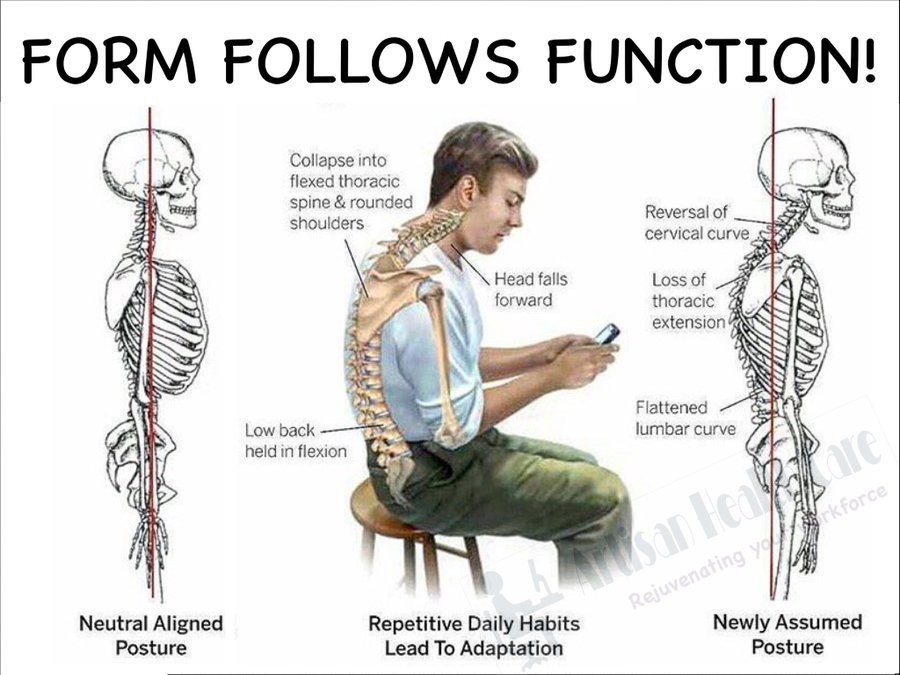Louis Henry Sullivan, a well-known architect (father of modernism), said “form ever follows function” when it came to designing buildings. This principle states that the shape of a building or object should directly relate to its intended function or purpose. As the father of the skyscraper, he began to use the steel frame and modern materials.
We can often look at a building and guess what it houses. For example, the Guggenheim Museum, pictured above, uses beauty and simplicity of design, with curved lines, for a more aesthetic look.
What about the human body? The way our body is structured is intended to support its function: to move, work, digest, play, and rest.
Just last week in classes we experimented with arm movement while slouched, then upright, to demonstrate that the shoulder function works better when the body is in proper alignment.
My personal philosophy about teaching yoga is that we use movement to support our daily life use, not for appearance. It’s why I don’t teach extreme poses. My intention is for poses to help us maintain, or improve, our body’s function.
Another example of this principle is that if how we use our body changes, it adapts and changes shape. This can happen through disease, accident, malformations we were born with, and by habit. See the picture below, by Artisan Health Care @ErgoArtisan.
We can actually reverse some of these gradual changes by using good alignment and awareness in our practice.
If you want to practice yoga with me, I provide many options, including group classes or 1-on-1 sessions via Zoom or in-person, and video recordings.
In Peace & Health,
Eva

